Controlling fire and explosion risks in the workplace.
We are often asked by businesses “what are dangerous substances?” and “does our business need to 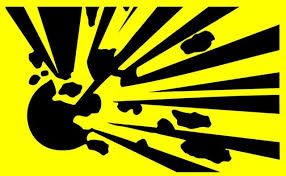 undertake a DSEAR assessment?” So this week I thought that I would look at this in more detail and I have even chosen one of this week’s HSE cases because it too looks at these regulations.
undertake a DSEAR assessment?” So this week I thought that I would look at this in more detail and I have even chosen one of this week’s HSE cases because it too looks at these regulations.
The HSE identifies that dangerous substances are any substances used or present at work that could, if not properly controlled, cause harm to people as a result of a fire or explosion.
In practical terms they can be found in nearly all workplaces and include such things as solvents, flammable paints, varnishes, flammable gases (such as LPG and Acetylene), and dusts that can be created as a by-product (e.g. from sanding, or in waste handling), or dusts from foodstuffs
This week’s 2 recent HSE cases look at accidents on of which is a breach of DSEAR.
- SPEL Products pleaded guilty to breaching Regulations 5(1), 6(1) and 9(1) of the Dangerous Substances and Explosives Atmospheres Regulations 2002, and was fined £13,666 and ordered to pay costs of £4,856.
- Mr Thomas suffered multiple injuries to his head and neck including a brain stem injury, a punctured lung, broken ribs and a lacerated liver. Mr Thomas is now unable to talk, move or feed himself and requires residential care.
As ever, if you have a subject that you would like us to cover one week, please contact us by phone 01458 253682, email or via our Facebook page or by Twitter.
Controlling fire and explosion risks in the workplace.
DSEAR stands for the Dangerous Substances and Explosive Atmospheres Regulations 2002.
Dangerous substances can put peoples’ safety at risk from fire, explosion and corrosion of metal. DSEAR puts duties on employers and the self-employed to protect people from these risks to their safety in the workplace, and to members of the public who may be put at risk by work activity.
What does DSEAR require?
As a business you first need to know what substances in your workplace have the potential to present fire and explosion risk. We find that too many businesses fail to understand this and are therefore putting their employees and business at risk.
It’s only when the above is properly identified that your business can think about making sure the risks are properly controlled; either by removing the risk or through risk reduction. Another problem is that businesses fail to consider all of their processes; as many DSEAR risks are often associated to maintenance and cleaning. Therefore it is imperative that your business considers what controls would be needed for these activities. For example, are Permits to Work required?
Because of the nature of hazardous substances it is also imperative to consider what would happen if something was to go wrong and to have in place emergency planning. It may even be necessary to inform the local Fire Service of these plans; it’s a key recommendation that we make to clients with flammable gases (especially Acetylene).
Another important action is to make sure employees are properly informed about and trained to control or deal with the risks from the dangerous substances. It’s an area that far too many businesses fail to deal with properly and we are amazed at how little training employees usually have and how this lack of awareness increases the potential risks on their safety and the safety of the business.
A fundamental requirement of DSEAR is to identify and classify areas of the workplace where explosive atmospheres may occur. Where explosive atmospheres may occur these must be classified into hazardous zones based on the risk of an explosion occurring, and protected from sources of ignition by selecting suitable equipment and protective systems.
So what is a dangerous substance?
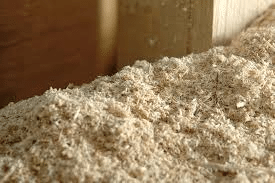 Dangerous substances are any substances used or present at work that could, if not properly controlled, cause harm to people as a result of a fire, explosion or similar incident, such as an uncontrolled chemical reaction.
Dangerous substances are any substances used or present at work that could, if not properly controlled, cause harm to people as a result of a fire, explosion or similar incident, such as an uncontrolled chemical reaction.
They can be found in nearly all workplaces and include such things as solvents, paints, varnishes, flammable gases, liquefied petroleum gas (LPG), dusts from machining and sanding operations, and dusts from foodstuffs.
Dangerous substances do not include all materials that can catch fire in the workplace. However, some materials that can cause the rapid escalation of a fire if handled in a certain way are also classed as dangerous substances under DSEAR (e.g. cellular plastic foams).
What is an explosive atmosphere?
An explosive atmosphere is a mixture of a dangerous substance or substances (gas, mist, dust or vapour) with the air, which has the potential to catch fire or explode. An explosive atmosphere does not always result in an explosion but, if it does catch fire, the flames travel quickly. If this happens in a confined space (e.g. in plant), the rapid spread of the flames or rise in pressure could also cause an explosion.
When does DSEAR apply?
The Regulations apply to the majority of work activities, including those carried out in moveable structures, outdoor areas and domestic premises, where:
- work is being carried out by an employer (or self-employed person);
- a dangerous substance is present (or is liable to be present or generated) at the workplace;
- a potentially explosive atmosphere may occur;
- the dangerous substance and/or potentially explosive atmosphere could be a risk to the safety of people as a result of fires, explosions or similar energetic events.
For example, DSEAR covers the following activities:
- storage and use of flammable liquid-based paints and inks;
- storage of LPG;
- storage and use of oxygen;
- storage and transport of powders in pharmaceutical and food industries;
- storage and display of flammable goods, such as paints in shops;
- handling and storage of flammable waste solvents;
- welding or other ‘hot work’ on tanks and drums that have contained flammable material;
- use of flammable gases, such as acetylene, for welding;
- use of flammable solvents in laboratories;
- transport of flammable substances in containers around a workplace;
- deliveries from road tankers, such as flammable liquids, gases and bulk powders;
- chemical manufacturing, processing and warehousing.
What does your business need to do?
DSEAR places duties on employers and the self-employed (considered employers for the purposes of the Regulations) to assess and eliminate or reduce risks from dangerous substances so far as is reasonably practicable. To comply you should do the following.
Step 1 Identify the fire and explosion hazards and hazards from similar energetic events
This should be an identification and careful examination of: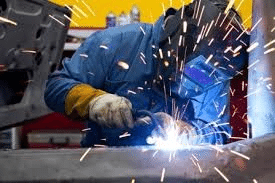
- the dangerous substances present, including those that may be formed in the workplace;
- the potential ignition sources of the dangerous substances;
- the work activities involving the dangerous substances;
- the possible formation and extent of explosive atmospheres;
- the scale of the anticipated effects from the fire, explosion or similar energetic event.
The supplier’s Material Safety Data Sheet should provide key information on the properties and hazards of the dangerous substance to assist you in this task. It should also provide information on the safe methods for the storage, use and handling of the dangerous substance, or make reference to where this may be found.
Step 2 Decide who might be harmed and how
Identify the people at risk from the fire, explosion hazards or similar energetic event involving the dangerous substance.
Based on your consideration of the anticipated effects of the incident, determine who might be potentially harmed by it. This includes members of the public who might be put at risk by the work activity.
Step 3 Evaluate the risks and decide on precautions
You should determine whether the measures taken are adequate to eliminate or reduce the risks from dangerous substances, so far as is reasonably practicable.
This should take account of such things as:
- the possible substitution of the dangerous substance by one that is non-hazardous, or one that is less hazardous;
- the control measures to prevent a fire, explosion or similar energetic incident from occurring;
- the mitigation measures to limit the scale and magnitude of the incident should it occur.
Step 4 Record your findings and implement control measures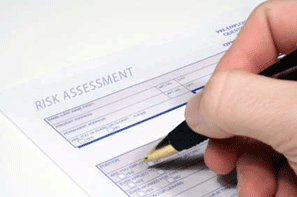
If you employ five or more employees, you should record the significant findings of your risk assessment. This should include the location and extent of explosive atmospheres and their classification in terms of zones.
The risk assessment should also help you decide on:
- the information, instruction and training you give to your employees. This should be sufficient for them to safeguard themselves and others from the risks presented by the dangerous substances;
- the arrangements to deal with accidents, incidents and emergencies, including involvement of the emergency services.
Step 5 Review your risk assessment and update if necessary
If you introduce significant changes to your workplace, such as changing the dangerous substances present or their quantities, or changing the work equipment or processes, you should review your risk assessment.
Similarly, you should do this in the event of an incident, including a near miss – for example a release of a dangerous substance without ignition – to determine if the measures you have in place are sufficient.
You should carry out a risk assessment regardless of the quantity of dangerous substance present, as it will enable you to decide whether existing measures are sufficient or whether any additional controls or precautions are necessary.
As well as assessing the normal activities within the workplace, you will also need to assess non-routine activities, such as maintenance work, where there is often a higher potential for fire and explosion incidents to occur.
If there is no risk to safety from fires and explosions, or the risk is trivial, no further action is needed. If there are risks then you should consider what you need to do to comply fully with the requirements of DSEAR.
Classification of areas where explosive atmospheres may occur
Employers must classify (into zones) areas where hazardous explosive atmospheres may occur. The classification given to a particular zone, and its size and location, depends on the likelihood of an explosive atmosphere occurring and its persistence if it does. It is important to understand these requirements fully, as failure could lead to:
- An area going unclassified and leading to ignition of a flammable atmosphere; or
- Over rating of a hazardous zone; this can make operating in such zones very expensive and sometimes incurring unnecessary expenditure.
By accessing the BSI standards you can find detailed information and guidance on the classification and zoning of areas where potentially explosive atmospheres may occur and the selection of equipment for use in those areas. Your supplier and relevant trade association are also likely to be able to provide useful advice on Hazardous Area Classification for your workplace.
Selection of equipment and protective systems
Areas classified into zones must be protected from sources of ignition. Equipment and protective systems intended to be used in zoned areas should be selected to meet the requirements of the Equipment and Protective Systems Intended for Use in Potentially Explosive Atmospheres Regulations 1996. Equipment already in use before July 2003 can continue to be used indefinitely provided a risk assessment shows it is safe to do so.
Where necessary, the entry points to areas classified into zones must be marked with a specified ‘EX’ sign.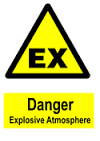
Static is a potential source of ignition that is often not properly considered.
Making sure that you have suitable earthing controls can help prevent fires and explosions.
Additionally, providing anti-static clothing may be necessary – depending upon the level of risk identified in the risk assessment. Employees may need to be provided with suitable clothing and footwear if working in zoned areas
Confirming (verifying) overall explosion safety
Before a workplace containing zoned areas comes into operation for the first time, the employer must ensure that the overall explosion safety measures are confirmed (verified) as being safe. This must be done by a person or organisation competent to consider the particular risks in the workplace, and the adequacy of the explosion control and other measures put in place.
If you would like any further help or support, please please contact us by phone 01458 253682 or email.
Training
We shall be running new courses again in 2016 and the dates and details of forthcoming courses will be published here each week.
But remember we are still available for running “In House” courses and we have now also added a new training service for our customers.
Site Manager Safety Training Scheme
(Part of Construction Skills “Site Safety Plus” Suite of Courses)
We have formed an association with a local company TQ Excel who are one of the UK’s leading providers of accredited training to the highways sector of the construction industry.
AS a result of this we can now offer the SMSTS (Site Management Safety Training Scheme)
The Site Management Safety Training Scheme forms part of the Construction Skills (CITB) Site Safety Plus range of courses which are highly regarded within the construction industry.
The 5 day training course is aimed at site managers wishing to develop a more in depth legal, moral and social understanding of their role and also teaches delegates how to manage on-site health and safety in accordance with current legislation.
We also offer the 2 day SSSTS Training Course (Site Supervisor Safety Training Scheme) which is a 2 day course aimed at those with on-site supervisory responsibilities.
We also can now offer NRSWA courses.
These qualifications are for those involved in the Excavation and Re-instatement of the highway and are specified under the New Roads and Street Works Act 1991. They are a legal requirement for “statutory undertakers” (i.e. Utility Contractors) and for those working under “section 50 licenses” (Drainage works etc).
Where works are subject to the Act there must be a minimum of 1 qualified operative on every site that is qualified for the operations being carried out and there must be a Supervisor available to visit the site at least on a daily basis.
The qualifications are also often specified by client organisations and local authorities when appointing contractors for works involving excavation or reinstatement of the highway for other purposes.
The first of our courses are:
Site Manager Safety Training Scheme (Part of Construction Skills “Site Safety Plus” Suite of Courses)
Target Audience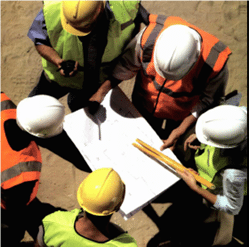
Site managers, agents and persons who are, or are about to be, responsible for planning, organising, monitoring, controlling or administering groups of staff and workforce.
Aims & Objectives
To help site managers, agents and supervisors to:
- Manage health & safety on site in accordance with urrent legal provisions, and within the context of their management or supervisory role
- Develop an understanding of responsibilities and accountability for site health, safety and welfare
- Recognise that a safe site is efficient, economical and productive
Delegates will, at the end of the training, be aware of and able to:
- Implement all health, safety, welfare and environmental legislation which affects them during their work
- Implement new guidance and industry best practice
- State their duties and responsibilities with regards to health, safety, welfare and the environment
Course Notes / Assessment / Certification
Candidates will be issued a copy of GE700/16 – Site Safety Simplified and the course study notes.
Candidates will be assessed through 3 Core Exercises and an end of course examination.
Certificates are issued by Construction Skills and are valid for 5 years.
This 5 day Course will be held at The Oaktree, Bristol Road, Edithmead, Highbridge, Somerset TA9 4HA (14th – 16th March inc and 22nd & 23rd March 2016).
The all-inclusive rate of £495.00 + vat per delegate will be payable at the time of booking.
Re-qualification First Aid at Work
This First Aid at Work Refresher course is designed for anyone who has previously completed the 3 day First Aid at Work qualification and needs to renew their skill-set and certification. This refresher lasts 2 days and secures the delegates’ qualification for a further 3 years before the course will need to be retaken.
Updated to cover the control of catastrophic bleeding
SYLLABUS
- Course introduction.
- Legal compliance.
- Managing incidents.
- Examining a casualty.
- Conscious/unconscious casualties.
- Treating a casualty.
- Further emergency action.
- General common illnesses.
- Basic life support.
- First aid kits/equipment.
- Recording/reporting injuries.
Course Duration: 2 Days
COURSE REF DATE(s) LOCATION
WSG. RFAW. 1601 14th & 15th April 2016 6 Amor Place, Taunton, Somerset TA1 4SG
The all-inclusive rate of £165.00 + vat per delegate will be payable at the time of booking.
Your staff can attend three months before the expiry date on their certificate and still retain the month of expiry on their new certificate.
They must renew no later than 28 days after their expiry date.
Dates for other courses will follow soon
If you have any questions about these courses or any other training or would like us to run a particular course for you, call Jon Wilkins of the Wilkins Safety Group on 01458 253682 or email him.
Your business is safer in our hands
